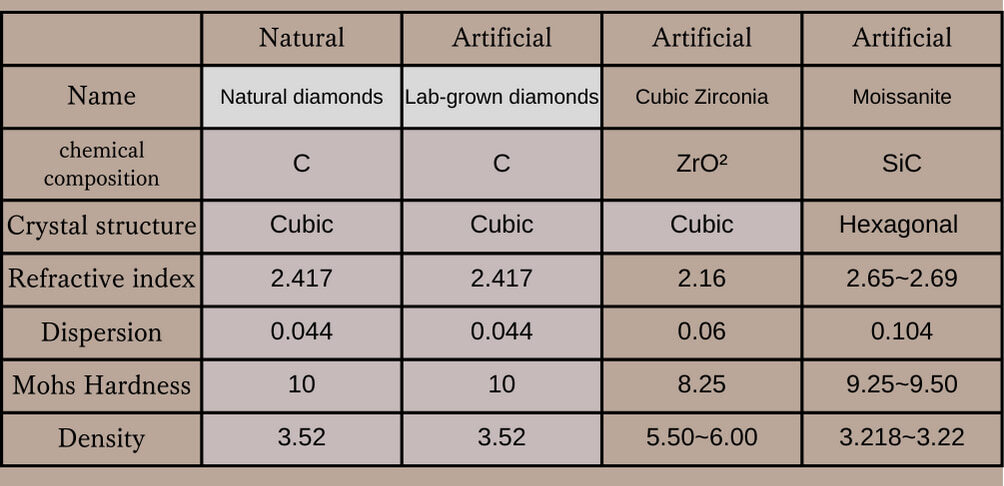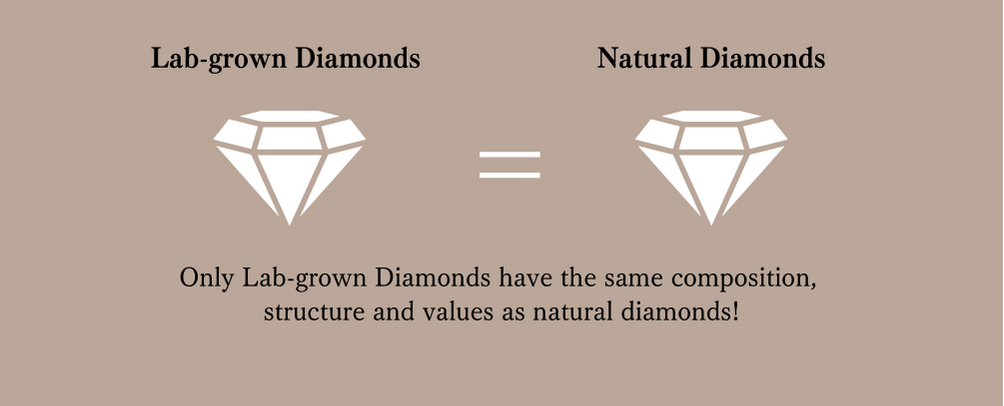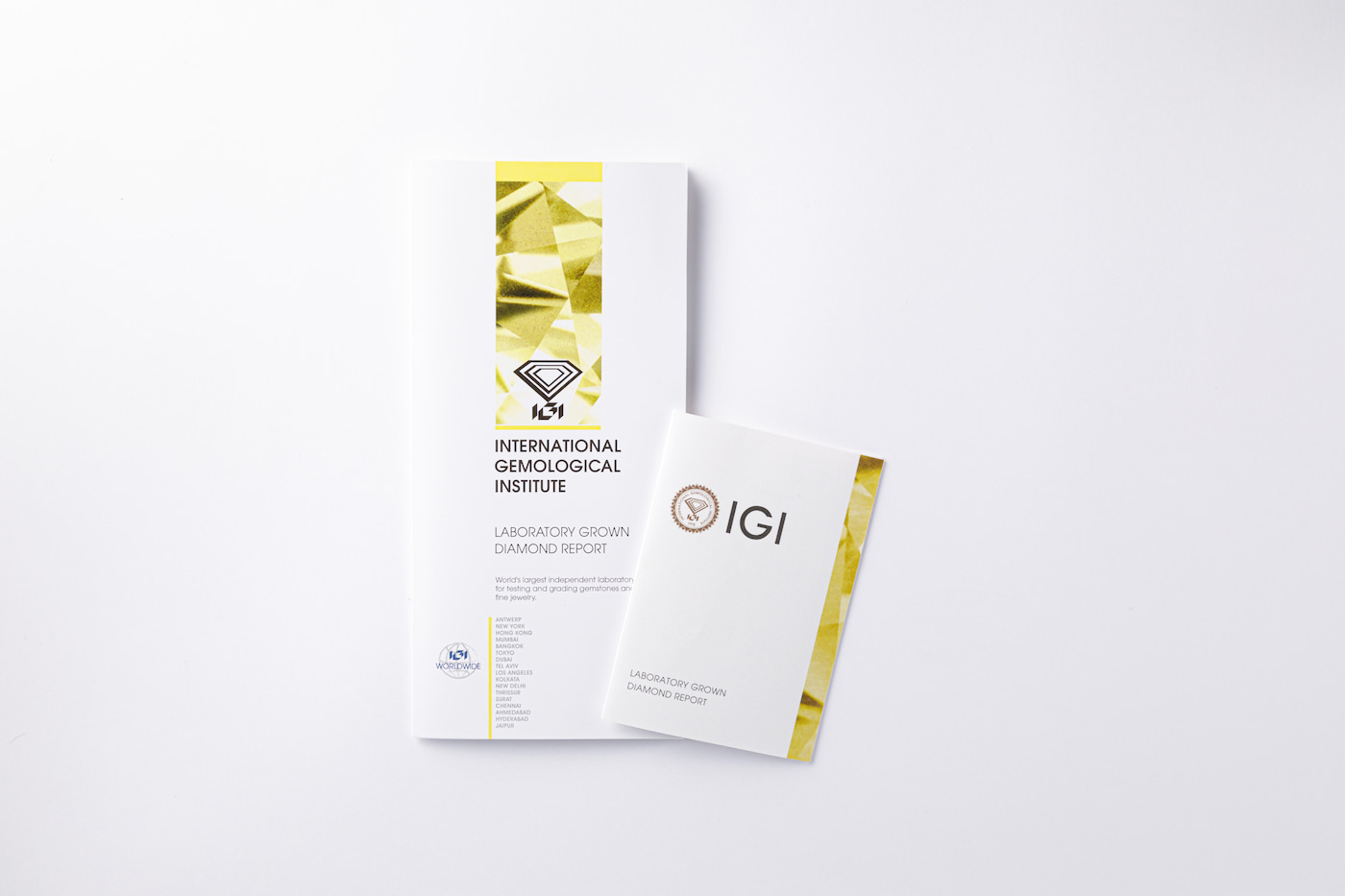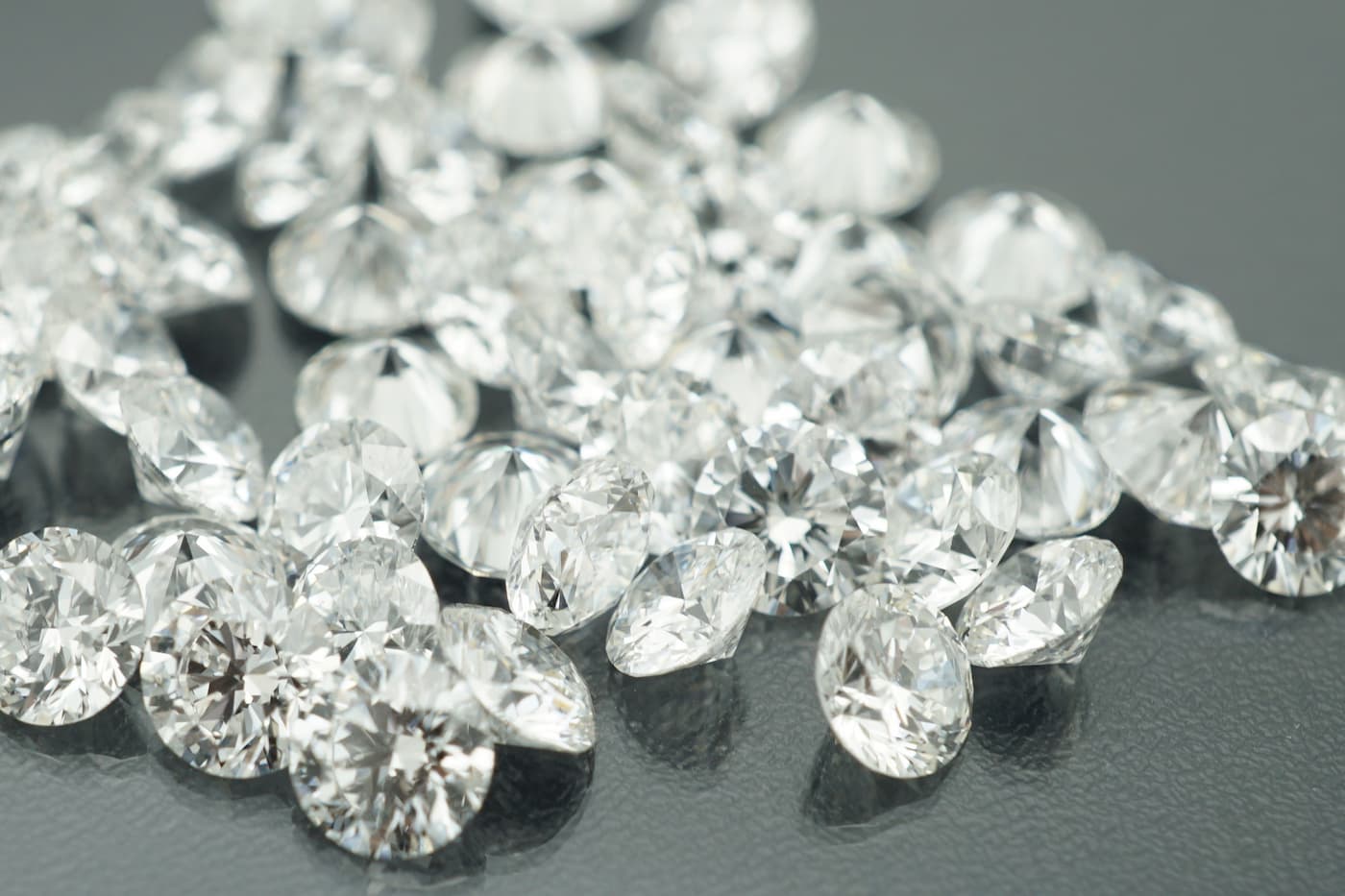What are Lab-grown
diamonds?
Miraculous Created Diamonds
While natural diamonds are created deep underground, laboratory-grown diamonds (synthetic diamonds) are created above ground over several weeks to several months. They are not mined, but are grown in a lab (research institute, workshop, laboratory) and carefully nurtured (grown).
Lab-grown diamonds are ecological materials that are friendly to the global environment and in harmony with society.

Lab-grown diamonds have been attracting attention mainly from American celebrities who are highly conscious of "ESG" (Environmental, Social, and Governance) in terms of environmental issues and ethics, and are also referred to as “Ethical Diamonds”,clean, guilt-free diamonds. Also called as “Sustainable Diamonds” because they are produced in a sustainable way and can be supplied stably for the next generation, thus contributing to future development.
Lab-grown diamonds are true diamonds that have exactly the same composition, chemical composition, crystal structure, physical characteristics, and optical properties as natural diamonds, just in a different environment from that in which they are created. Even a skilled appraiser cannot tell the difference. Because it is possible to crystallize diamonds in a state free of impurities, their beauty is said to be outstandingly transparent and brilliant.

Lab-grown diamonds are scientifically proven to be "Real Diamonds," not simply "diamond-like or imitation stones” that look like cubic zirconia or moissanite.

Even if a professional and skilled appraiser from an international gemological institute such as IGI (International Gemological institute) or GIA (Gemological Institute of America) appraises it with a loupe, it is not known. Only GIAiD100 and other gemological instruments are capable of identifying a diamond as a lab-grown diamond. Currently, there is an institution in Japan that grades lab-grown diamonds.
September5 diamonds of 0.3 carat or more will be accompanied by a certificate of authenticity from the International Gemological Institute (IGI) or the Japanese gemological institute CGL (Central Gemological Laboratory) / LGC Co.
September5 lab-grown diamonds are stamped LGD.
Diamonds with a grading report will have the grading number stamped on the girdle.

The lab only creates an environment that encourages growth, so it does not produce a large number of lab-grown diamonds of the same quality, but each is born with its own unique shape, color, and size. Each one is a unique diamond.
Lab-grown diamonds avoid the environmental destruction caused by large-scale mining, human rights abuses caused by atrocious labor and child labor, and are not involved in conflicts. The sustainable mindset is spreading around the world. And the next generation of brilliance is attracting the attention of those who choose to live ethically and are loved by international celebrities.
Leonardo DeCaprio is an avid supporter of environmental, social, and animal issues and invested in a lab-grown diamond production company in 2015. Lady Gaga, known for her commitment to social causes, also wears earrings from Lab-grown diamonds. Emma Watson made headlines for wearing a Lab-grown diamond tennis bracelet at the 2018 Academy Awards. Penelope Cruz is producing a jewelry collection with Lab-grown diamonds. The diamonds have caught fire in Europe and the U.S. due to celebrity use, and are now becoming more common around the world.

This method of production allows for a stable supply for the next generation, making diamonds that were once rare more accessible to the public.
Lab-grown diamonds are friendly to both the earth and people.
Lab-grown diamonds are gaining market share as next-generation diamonds supported by people with diverse values, which are often seen in the "Generation Z" and "Millennium Generation.
How to create Lab-grown diamonds
How are Lab-grown Diamonds made?
Depending on the size, it can take from a few weeks to a few months to create a lab-grown diamond.
Some may think, "Since they are made, can't they easily produce a lot of them?"
However, the growth environment inside the equipment is created by human beings. Diamond growth is spontaneous and not something we can completely control, and we cannot create exactly the same lab-grown diamonds.
Like natural diamonds, they are unique.
It is also difficult to produce large, pure lab-grown diamonds, so large diamonds of high quality are rare.
First,we will explain the difference between the way natural diamonds and lab-grown diamonds are made.
Around 120-200 km of the upper mantle deep beneath the Earth
↓
In high-temperature, high-pressure environments
↓
Mineral in which the chemical component carbon is crystallized
↓
Pushed up near the surface by volcanic activity
↓
Mined near the surface or in rivers and coastal areas washed away by rain
↓
Natural Diamonds
Diamonds produced by efficiently reproducing the process of crystallizing carbon, which is the chemical composition of diamond, in a laboratory using advanced technology and special equipment.
There are two types of how lab-grown diamonds are produced.
HPHT method <High Pressure, High Temperature〉
A method is called the "high temperature, high pressure method”.
The mantle is reproduced as it was when natural diamonds were formed, creating the same conditions as those under which diamonds are formed in the earth.
This process produces diamond crystals by applying ultrahigh pressure (about 55,000 atmospheres) to small diamond seed crystals in a device heated to ultrahigh temperatures (about 1,500 degrees Celsius) like those deep in the earth to deposit carbon.
The process used to to produce melee diamonds in a larger apparatus, but technological advances have enabled the production of large diamond crystals.
CVD Method <Chemical Vapor Deposition>
A method called "chemical vapor deposition.
It is produced using methane gas and microwaves.Layers are created by depositing carbon fragments on diamond seed crystals like snow.
The chemical reaction controls the surface of the treated material (diamond) with the power of chemistry, making it possible to produce large lab-grown diamonds.
Attractiveness of
Lab-grown Diamonds
- Ethical Sustainable
In the late 1990s, the illicit trade in natural diamonds was causing problems by funding conflicts around the world. The movie "Blood Diamond" (released in 2006), starring Leonardo DiCaprio, vividly depicts children being forced to work illegally to obtain natural diamonds.
In response to this problem, the Kimberley Process Certification System was adopted in Interlaken, Switzerland, in 2002, establishing an international system to control the import and export of fraudulently obtained rough natural diamonds and to certify their origin.
Natural diamonds crystallized 3 billion years ago in the Earth's deep mantle.Magma pushed to the surface by volcanic activity became kimberlite, a rock that contains diamonds.The pipe-like kimberlite pipe deposits that remain underground are where diamonds are mined.Mining is done in a variety of ways, including open-pit mining and underground mining, and the mining has a tremendous impact on nature.
Regardless of conflict issues, lab-grown diamonds are an ethical and sustainable option with a low environmental impact. Lab-grown Diamonds are expected to be a sustainable diamond for the next generation. - Price
Lab-grown diamonds, which have the same composition and composition as natural diamonds, can be purchased at half the price of natural diamonds because of the stable supply of high-quality diamonds.
Large natural diamonds are rare and difficult to obtain at a premium, and can be quite expensive, but lab-grown diamonds are available in larger carat weights. The larger the carat weight of the diamond, the greater the price difference. The larger the carat weight, the better the lab-grown diamond. - Pure and beautiful brilliance
Because lab-grown diamonds can be crystallized without impurities, their beauty is considered to be outstandingly clear and brilliant.
All colorless lab-grown diamonds grow as pure and beautiful carbon crystals without impurities and are called Type II a (Type 2a). Type II a diamonds are extremely rare and account for only 1-2% of all natural diamonds.
September5 Created
Miracle Diamond
We started to create products using lab-grown diamonds because we wanted to offer jewelry made with ethical, clear diamonds that are not involved in conflicts such as child labor or illegal labor. Like natural, lab-grown diamonds are born as one unique and one-of-a-kind individuals.
September5's lab-grown diamonds are made using the HPHT method. We try to prepare diamonds of high quality even when it comes to small melee diamonds without compromising their rank. As we are a small company, we directly import diamonds that have been appraised by diamond appraisers with a firm eye, and skilled craftsmen in Kofu City, Yamanashi Prefecture, carefully produce them one by one, and offer them to our customers at a fair price because we are a part of the process from design production to sales.
We started with the idea of making it a diamond that would be passed down. Our products are available at one-half the price of natural diamonds and are also attractive.
18k gold and platinum are used for all our products so that mothers and children can wear them together and pass them on to their children. We would be happy if we could create such treasures together with our customers.
